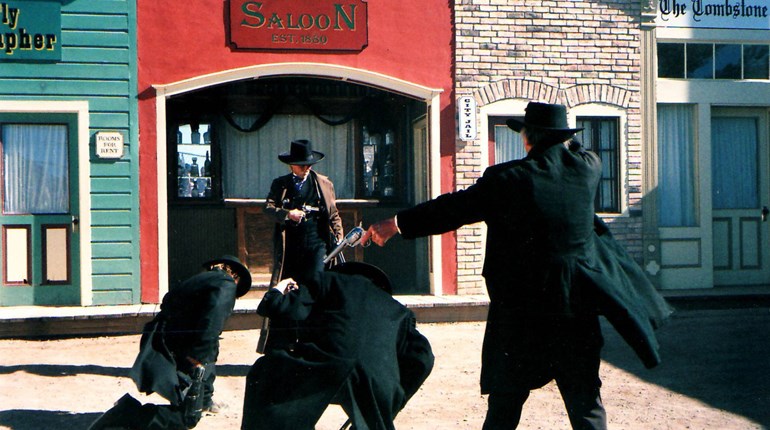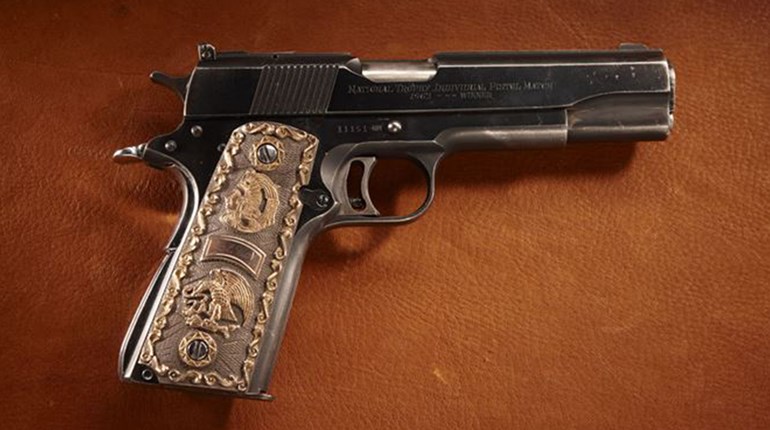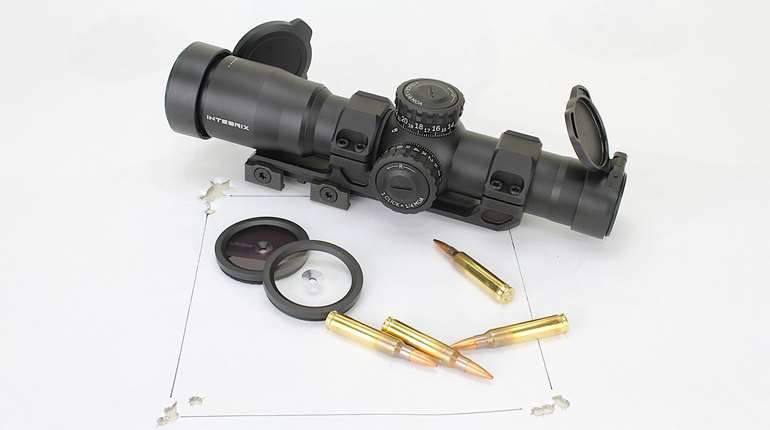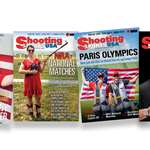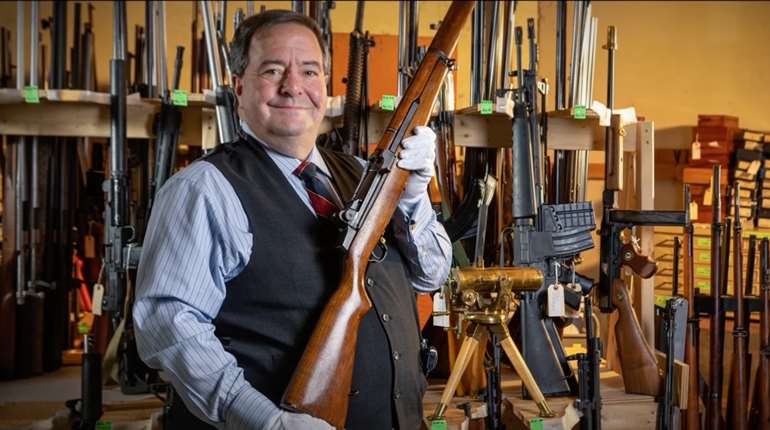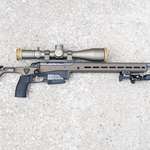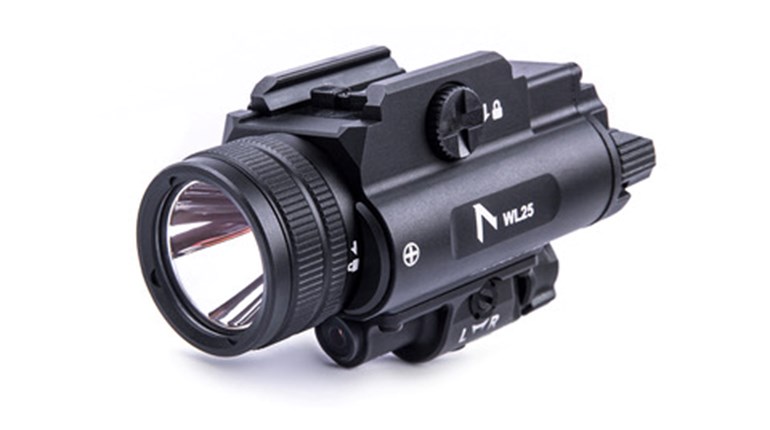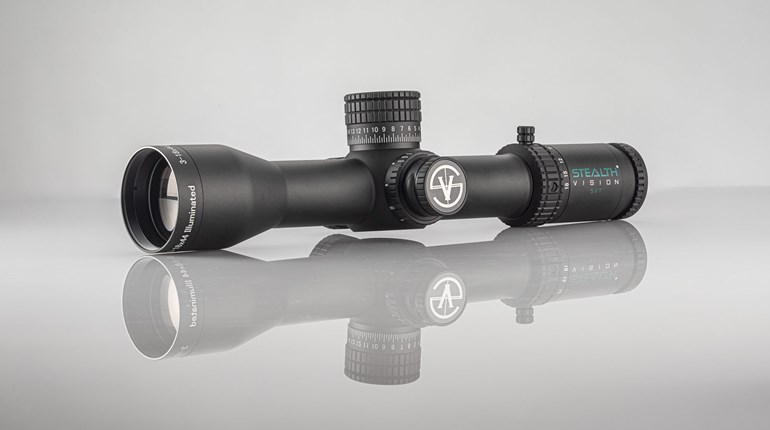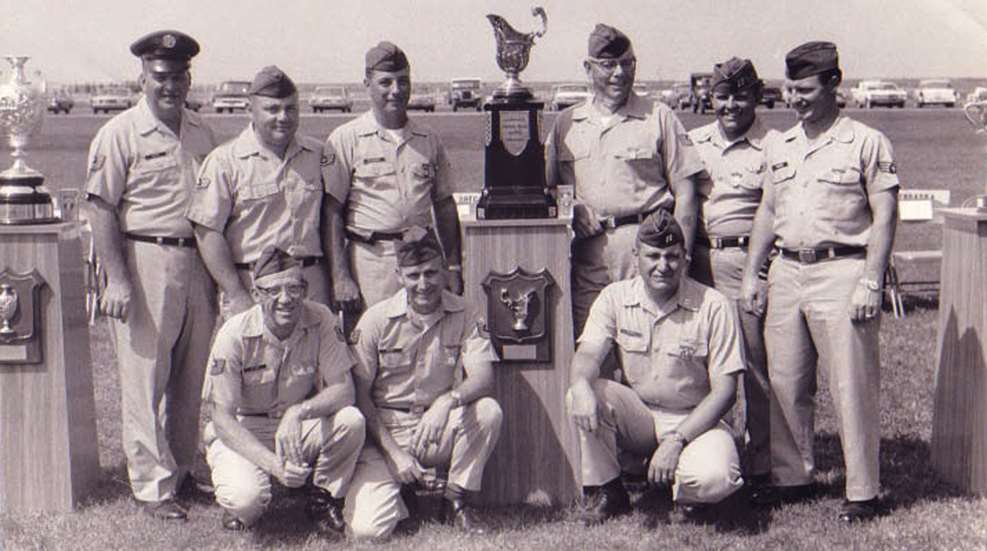
The beginning
In early 1951 a plan was put into motion whereby the Air Force might qualify for the 1952 Olympic Games held in Finland. In addition to the smallbore rifle team, the fiercest Air Force pistol competitors were Alan Luke, John Kelly, LTC Charles Densford and Col. Thomas Kelly. At the time, Col. Kelly was not aware of the place in Air Force history that awaited him.
The tipping point
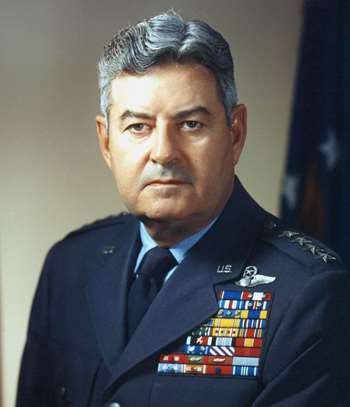
Many of the early gunsmithing “recruits” were aircraft engine mechanics, fighter pilots or other maintenance personnel who just liked to target shoot or hunt. From that early nucleus came the Air Force’s Gunsmithing “Shop” with pistol, smallbore and high power rifle, shotgun and subsequently running boar (now moving target) sections. An ammunition section was also formed to find the best loads, using their own 100-yard test tunnel. The shop would test a few rounds of ammunition from every manufacturer and, once they found the best, they would buy the entire lot. We knew when we were issued ammunition that we were getting the best available.
With the gunsmithing program underway, efforts turned to establishing a marksmanship school. The first contingent of Air Force shooters arrived at Ft. Benning, GA, to attend the U.S. Army’s advanced coach class in 1958. [Editor’s note: For reference, the Army formed its marksmanship unit in 1956, the Navy in 1957.] The Air Force marksmanship school “went live” later that year and present-day Air Force “Red Hat” rifle range instructors are the direct result of that original program.
With gunsmiths and a marksmanship school in place, Col. Kelly turned his attention to his final set of orders—making the best shooters in the world. Air Force shooters from 1959 until the program was discontinued in 1969 performed extremely well. I will only cover the accomplishments of the pistol team of which I was a part of and knew from firsthand experience.
Team composition
The majority of the early team members came from within the Air Force but there were some who came from the other Services. The first was Bill Mellon who came over from the Navy, then me, Arnold Vitarbo, from the U.S. Marine Corps. I was a member of the Marine Corps Pistol Team from 1961 through most of 1963, and was an established “2650 Bullseye” shooter for the Corps. In those days, whenever we encountered the Air Force Team at matches we were very impressed by their skill and professionalism, so much so that I wanted to become a part of it. During November of 1963, I completed my 10th year in the Marine Corps and decided to join the Air Force. After my discharge from the Marine Corps, I was turned down by an Air Force recruiter on a normal enlistment and actually was headed to Hawaii where we planned to live.
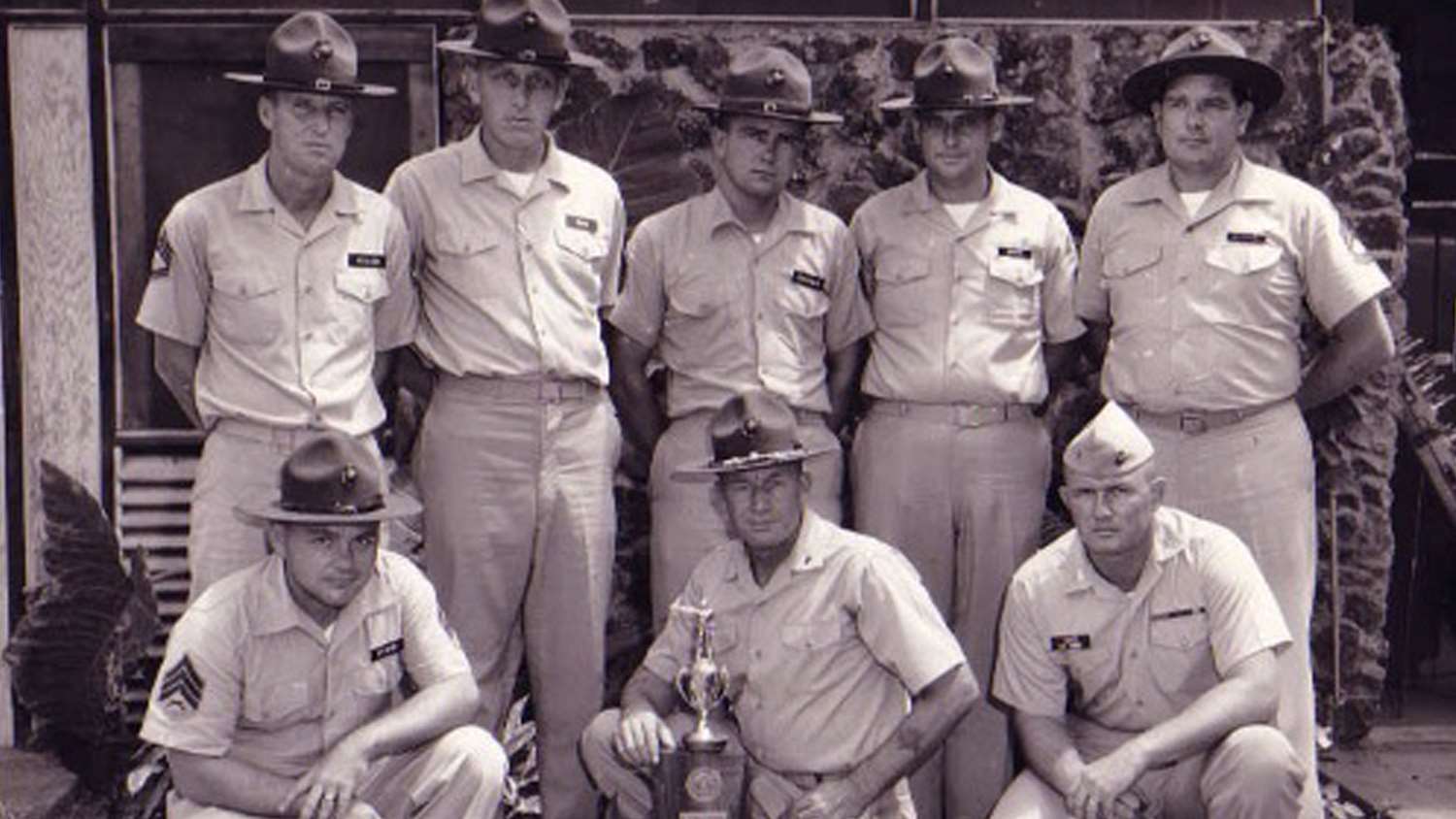
Col. George Van Deusen, Commander of the Air Force Marksmanship School, helped get me assigned directly to the team at Lackland AFB. It should be noted that Col. Van Deusen, a former fighter pilot with the “Flying Tigers,” often traveled with us and usually shot well over 2600 himself. When I arrived at Lackland I found that of the 15 shooters assigned to the Pistol Team, seven of them were current 2650 shooters, including the team captain and coach. (Note that all of these scores were fired with open sights, no scopes.) During my first half-year on the Air Force team in 1964, I fired in over 20 matches and had a 2646 match average, but was not able to make the Blue Team until later that year. My first match as a firing member of the Blue Team made me realize just how tough these guys were. From here on, I would like to list some of the highlights of our team’s accomplishments and put them in perspective.
-SSGT John Mahan broke 2650 12 times and never won a match with it. He was the only shooter I ever met who actually had his sights adjusted for a controlled “jerk.” Anyone else who shot his guns always shot high and to the right.
-In 1966, Capt. T.D. Smith III shot his .45 cal. wad cutter in centerfire matches and his “hardball” gun in the .45 stages for the entire year, with the goal of winning the National Trophy at Camp Perry. After 20 matches and an average close to 2650, he was, instead, sent to Vietnam.
-Capt. Franklin C. Green held the bullseye record for a while with a score of 2665. He injured his left hand so he switched and broke 2660 with his right hand. He became National Champion in 1968.
-TSGT Alvin R. Merx was the first man to shoot 300 over the .22 National Match course. (He subsequently equaled that score several more times.) Merx complained all the time because he hated shooting and said it was boring. He used to assemble distributor caps at a Ford Motor plant in Detroit and said that is what he enjoyed doing.
-Myself, Capt. T.D. Smith III, Capt. Frank Green, SSGT John Mahan and a few others also shot 300 in competition in the National Match course on different occasions. The first time I shot over 2660 (2664) I walked off the line thinking I had the match won, but soon found out that I came in second to T.D., who shot a 2666. In 1968 at Camp Perry, the Air Force made a clean sweep of the Nationals. We won the warm up match, all three guns and Frank Green won the Grand Aggregate. SSGT Edwin L. Teague won the National Trophy Individual Match and we also won all three Team Matches. In the American Rifleman magazine, the reporter said that the Air Force won everything except Lake Erie.
One team only
In those days, there were no separate Conventional and International teams. Those of us who could do both, shot in all of the major matches of each. Our Blue Team in Conventional was usually made up of the International shooters that included:
- Capt. Franklin C. Green, 1964 Olympic Silver Medalist in Free Pistol, 1968 National Pistol Champion, 2650 Club and President’s 100.
- Capt. Thomas D. Smith III, 1964 Olympic Team for Free Pistol, World Champion Center Fire and the retired record holder with a score of 599, 1963-64 Interservice Pistol Champion with a score of 2658-140X, (T. D. shot over 890 with the .22 so many times that it became common place for him), 2650 Club, President’s 100.
- SSGT Arnold Vitarbo (author), 1968 Olympic Team in Free Pistol, 1966 World Championships Free Pistol fourth place finish, 1967 Pan American Games Free Pistol fifth place finish, Team Gold Medal and Individual Gold, 1985 and 1968-1970 World Championship Team Member with a 568-match average in Free Pistol, 1969-1985 Free Pistol Record holder with a 571, 1969-1981 Standard Pistol Record of 586, 1985 Air Pistol Record of 584, 1973 National Free Pistol Champion, 1966 National Center Fire Championship, Distinguished in Rifle, Pistol and International, averaged 288 in individual and Team Matches with the Service Pistol for six seasons, 2650 Club, and President’s 100 seven times.
- SSGT Edwin L. Teague, 1964 Olympic Team in Rapid Fire and 1968 National Trophy Pistol Champion. Ed was a tremendous Police Combat Action shooter and had unbelievably quick reflexes. He later became the head of the SWAT program for the Arizona State Police. He was also part of the 2650 Club and President’s 100.
- LT. Gail Liberty shot as high as 2625 in the Conventional Pistol matches and was a member of the 1966 World Championship Team. After she retired from the Air Force, she made the National Team in Women’s Sport Pistol and Women’s Air Pistol.
Something to pass along
We had a large team score board set up at each match and were required to post our scores. The team would always gather around the score board after the match for open discussion. Although there was much camaraderie among the team members, when the match began, it was “dog-eat-dog.” I feel this attitude was very healthy and that it contributed to our overall success. If you were “thin skinned” you would not have lasted very long on the team.
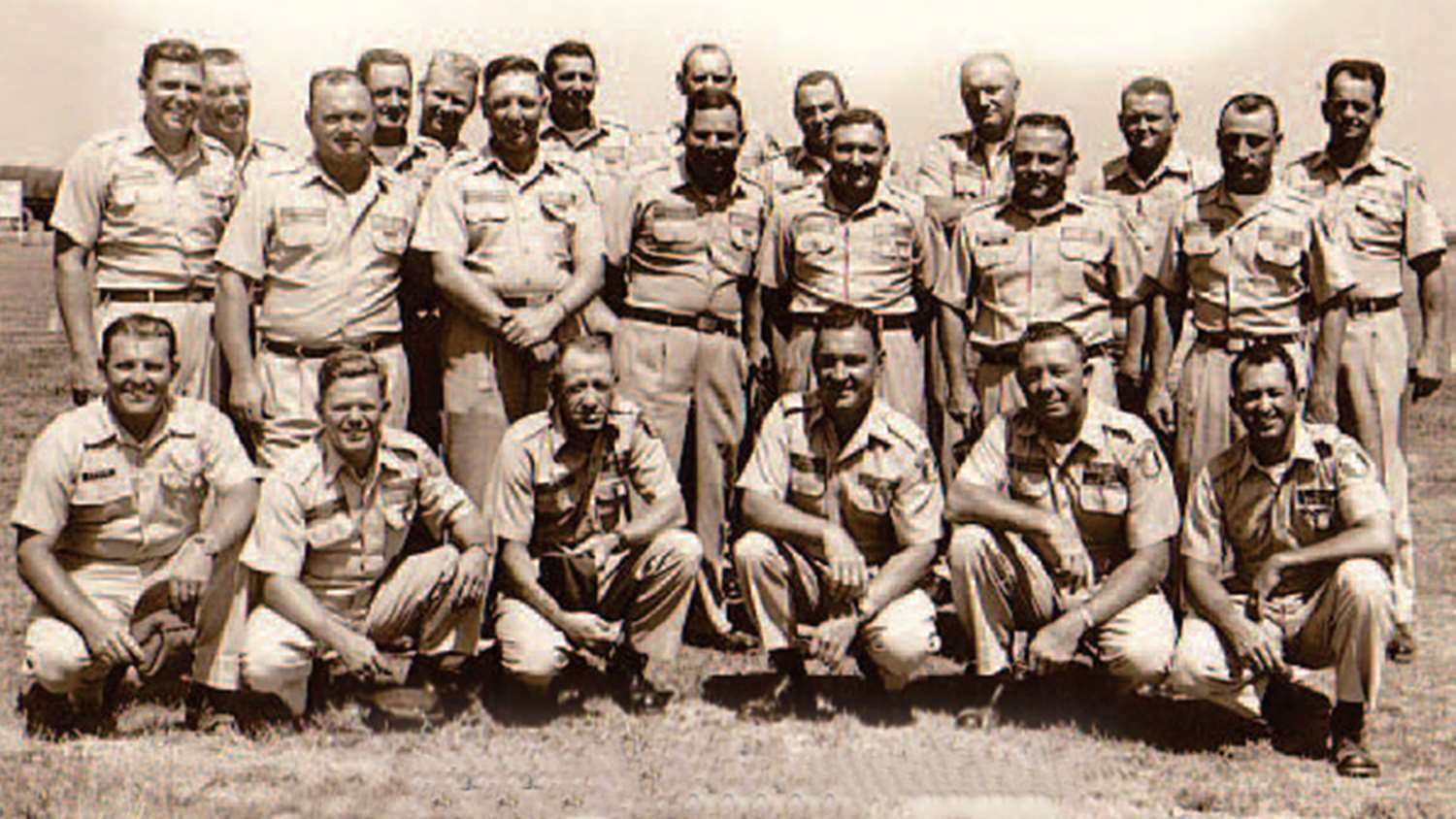
During team discussions, the subject of how to handle match pressure would always come up. In their own way, each shooter would finally admit they used some form of mental training, including imagery. The mental preparation normally began weeks before a major competition. The closer the “big” match came, the more we would get into our “shell.” These thoughts would include hearing ourselves being called to the firing line, getting our guns ready, etc. The night before a big match, we would try to imagine in more detail actually firing the match, hearing the range commands, the noise and also preparing for any problems that might arise like weather, target breakdowns, etc. When the command was finally given to commence firing, before each shot or string of shots was fired, we would rehearse the entire shot or string in our mind. This mental imagery included breathing, rise of the gun, watching the sights, feeling the trigger pressure and follow through. Immediately after this exercise, we would raise the gun and fire a well-planned shot or be ready for the commands for the sustained fire stages.
I still teach the following techniques to my students in my Coaching and Advanced Marksmanship Clinics. We would try to imagine seeing our sights clearly with our eyes closed. This is normally an acquired skill and takes time to master. It also helps to dry fire in a dark room or closet to get the feel of the trigger and how a smooth break should feel.
Closing remarks
It is my opinion that the reason for the overall skill level that was present during the 1960s was in large part due to the Air Force and its program. We were expected to act like professionals and were treated as such. The performances of the Air Force Team had a snowball effect: As the Air Force improved, the U.S. Army Marksmanship Unit at Ft. Benning improved along with the Navy shooters who, in turn, began to be a force to be reckoned with. The Air Force had to improve to beat the Army and Navy, and they in turn did likewise. The overall result was extremely high scores with a very high expectation level. There are record scores that were fired in the 1960s and early 1970s that are still standing.
There are other members too numerous to include in this article and I apologize for not mentioning anyone before 1962, but I was not on the team at that time.














